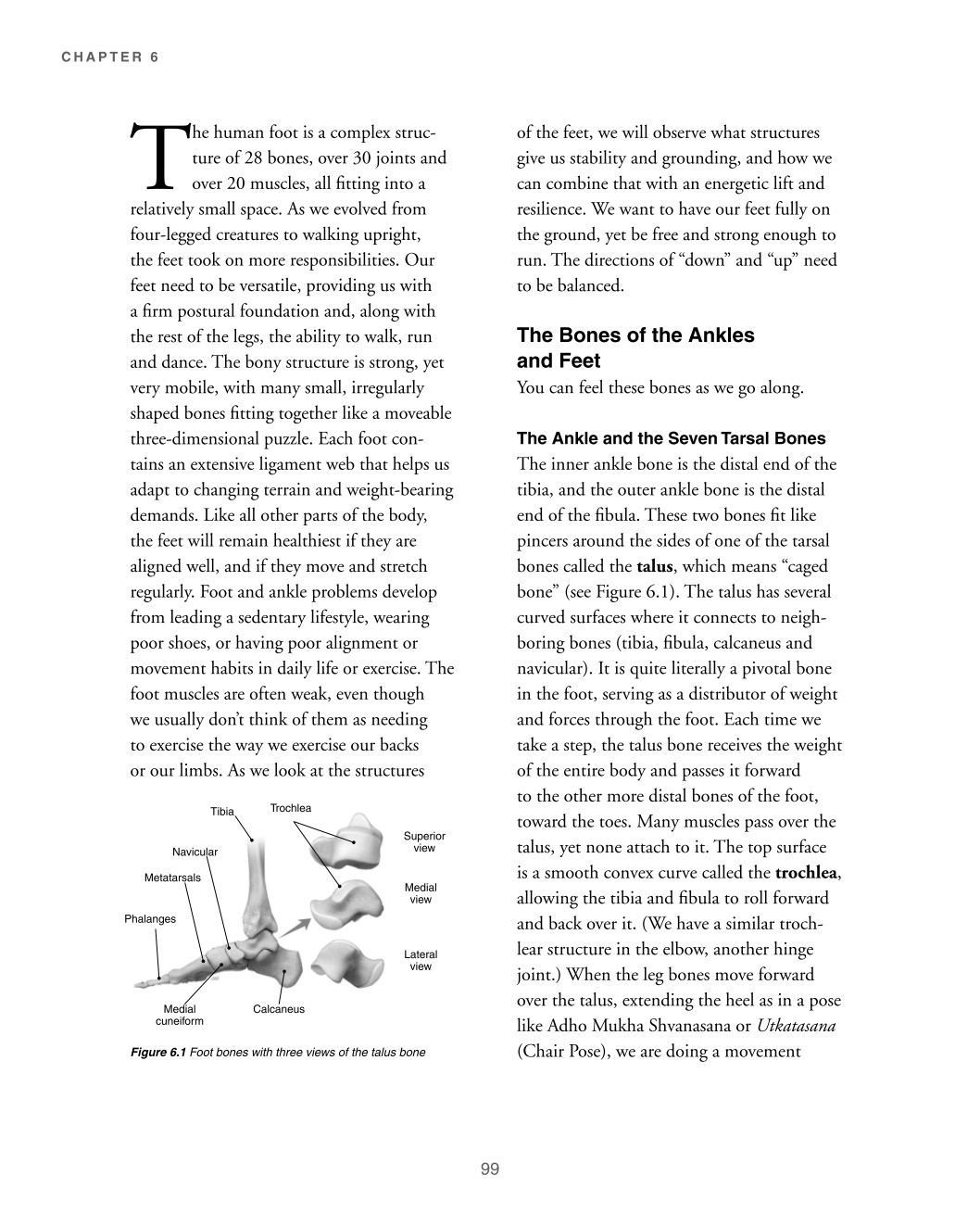

CHAPTER 6
T
he human foot is a complex struc- ture of 28 bones, over 30 joints and over 20 muscles, all fitting into a relatively small space. As we evolved from four-legged creatures to walking upright, the feet took on more responsibilities. Our feet need to be versatile, providing us with a firm postural foundation and, along with the rest of the legs, the ability to walk, run and dance. The bony structure is strong, yet very mobile, with many small, irregularly shaped bones fitting together like a moveable three-dimensional puzzle. Each foot con- tains an extensive ligament web that helps us adapt to changing terrain and weight-bearing demands. Like all other parts of the body, the feet will remain healthiest if they are aligned well, and if they move and stretch regularly. Foot and ankle problems develop from leading a sedentary lifestyle, wearing poor shoes, or having poor alignment or movement habits in daily life or exercise. The foot muscles are often weak, even though we usually don’t think of them as needing to exercise the way we exercise our backs or our limbs. As we look at the structures Tibia Navicular Metatarsals Medial view Phalanges Lateral view Medial cuneiform Calcaneus Figure 6.1 Foot bones with three views of the talus bone Trochlea Superior view
of the feet, we will observe what structures give us stability and grounding, and how we can combine that with an energetic lift and resilience. We want to have our feet fully on the ground, yet be free and strong enough to run. The directions of “down” and “up” need to be balanced. The Bones of the Ankles and Feet You can feel these bones as we go along. The Ankle and the Seven Tarsal Bones The inner ankle bone is the distal end of the tibia, and the outer ankle bone is the distal end of the fibula. These two bones fit like pincers around the sides of one of the tarsal bones called the talus, which means “caged bone” (see Figure 6.1). The talus has several curved surfaces where it connects to neigh- boring bones (tibia, fibula, calcaneus and navicular). It is quite literally a pivotal bone in the foot, serving as a distributor of weight and forces through the foot. Each time we take a step, the talus bone receives the weight of the entire body and passes it forward to the other more distal bones of the foot, toward the toes. Many muscles pass over the talus, yet none attach to it. The top surface is a smooth convex curve called the trochlea, allowing the tibia and fibula to roll forward and back over it. (We have a similar troch- lear structure in the elbow, another hinge joint.) When the leg bones move forward over the talus, extending the heel as in a pose like Adho Mukha Shvanasana or Utkatasana (Chair Pose), we are doing a movement
99